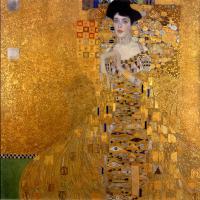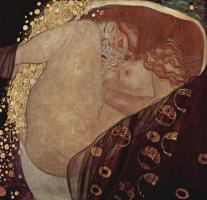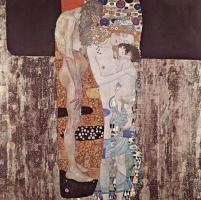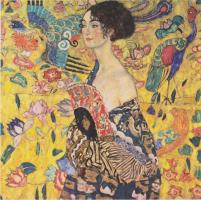Gustav Klimt
Klimt lived and worked in a scandalous city at a scandalous time: Vienna in the late nineteenth century. It was a hothouse of creative activity, producing the deliciously amorous operas of Richard Strauss, the salacious witty plays of Arthur Schnitzler, and a new wave in art and architecture called ‘Jugendstil’ (Young Style) a variant of Art Nouveau. All this came together with a new sexual freedom and an emphasis on the female form to produce the highly erotic work of Gustav Klimt.
He was the son of a gold and silver engraver, and this influence can be seen in his craftsmanship, and in his extensive use of gold. He set up a highly successful artists’ workshop which provided mural decorations for public buildings and private houses. By 1898 he was both founder member and president of a newly formed artists’ society, the Vienna Secession, and had embarked on an intellectually fashionable career. His later style was much influenced by a visit he paid in 1903 to Ravenna, where he was dazzled by the ancient mosaics which decorate the churches. This is evident in the rich ornament and intricately worked small areas in his pictures which are linked to form complex, tightly-knit patterns.
 The Three Ages of Woman represents the cycle of life and are set in a sea of
silver bubbles. The figures themselves are more closely surrounded by shapes
reflecting Klimt’s interest in the science of microbiology. A little research
reveals the shapes floating above the younger woman resemble colonies of
bacteria, while the older one stands amid an elongated protozoa associated
with death and decomposition.
The Three Ages of Woman represents the cycle of life and are set in a sea of
silver bubbles. The figures themselves are more closely surrounded by shapes
reflecting Klimt’s interest in the science of microbiology. A little research
reveals the shapes floating above the younger woman resemble colonies of
bacteria, while the older one stands amid an elongated protozoa associated
with death and decomposition.
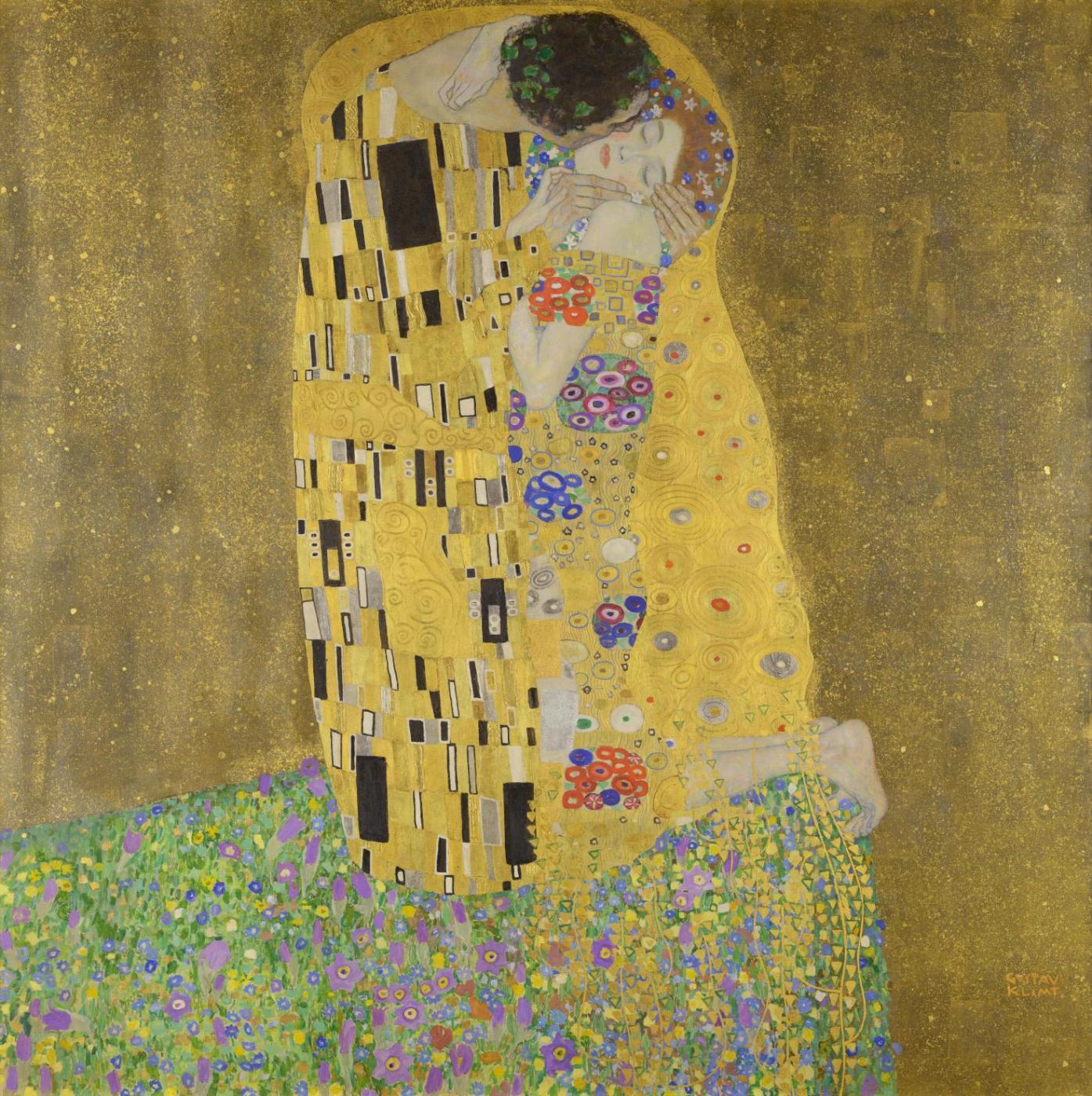 Klimt was naturally a silent man, but he expressed himself eloquently through
his art. He never married, but he adored women and often painted them. The
Kiss, his most famous painting, was shown in 1908 at a major exhibition in
Vienna, and, in spite of its suggestiveness, it was bought by the Austrian
government. Against an enormous golden sky a man and a woman are embracing,
naked under their richly patterned cloaks. The man’s head is garlanded and the
woman’s red hair adorned with star-like flowers; his cloak is decorated with
strong vertical rectangles, and hers with circular flower forms, to accentuate
their sexuality. They are sinking together on to a carpet of flowers, and the
woman’s eyes are closed in ecstasy as he kisses her. She is supported by his
arms, her hand resting lightly on his neck, only her toes stretched to balance
her, and to increase the erotic tension of the painting.
Klimt was naturally a silent man, but he expressed himself eloquently through
his art. He never married, but he adored women and often painted them. The
Kiss, his most famous painting, was shown in 1908 at a major exhibition in
Vienna, and, in spite of its suggestiveness, it was bought by the Austrian
government. Against an enormous golden sky a man and a woman are embracing,
naked under their richly patterned cloaks. The man’s head is garlanded and the
woman’s red hair adorned with star-like flowers; his cloak is decorated with
strong vertical rectangles, and hers with circular flower forms, to accentuate
their sexuality. They are sinking together on to a carpet of flowers, and the
woman’s eyes are closed in ecstasy as he kisses her. She is supported by his
arms, her hand resting lightly on his neck, only her toes stretched to balance
her, and to increase the erotic tension of the painting.


